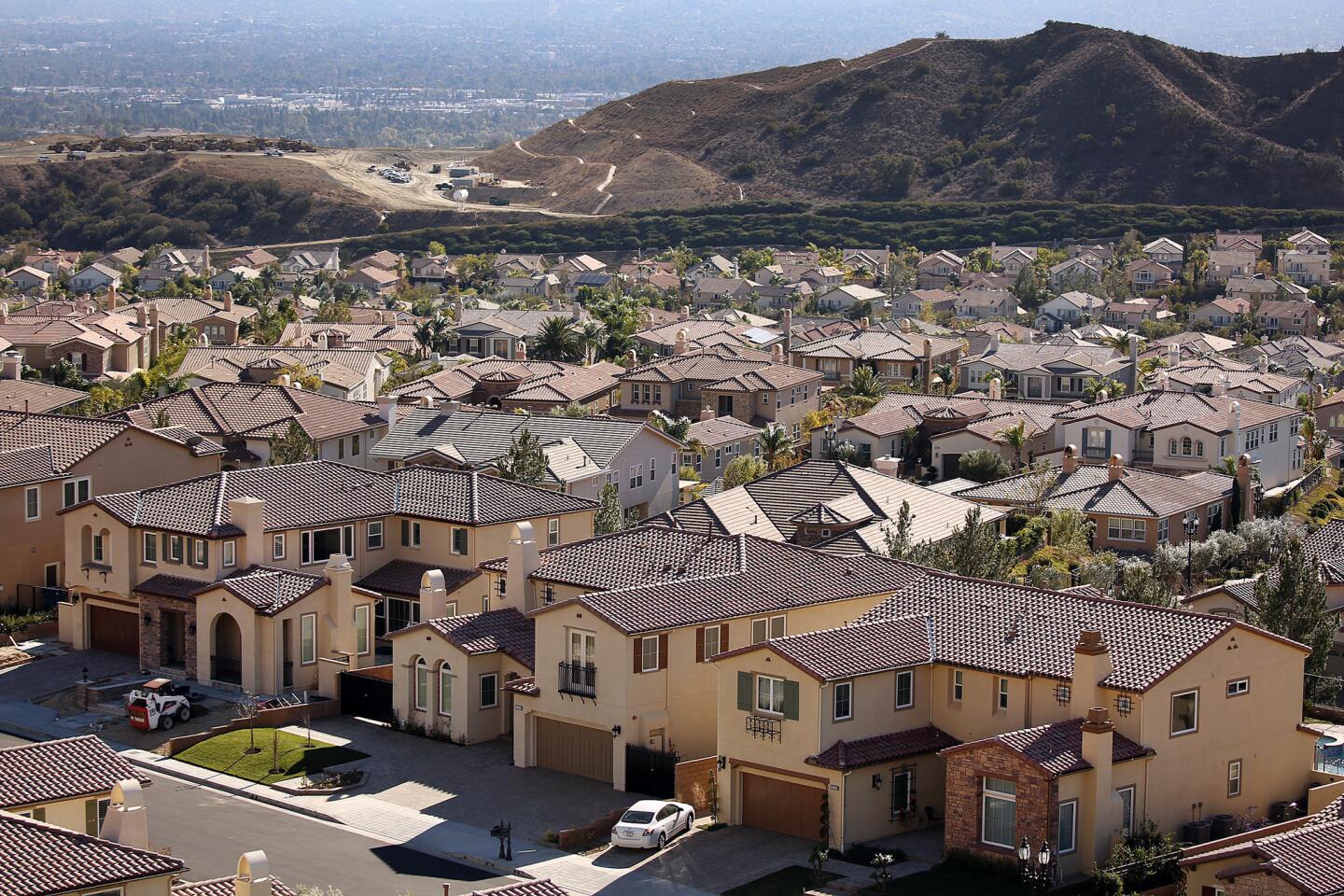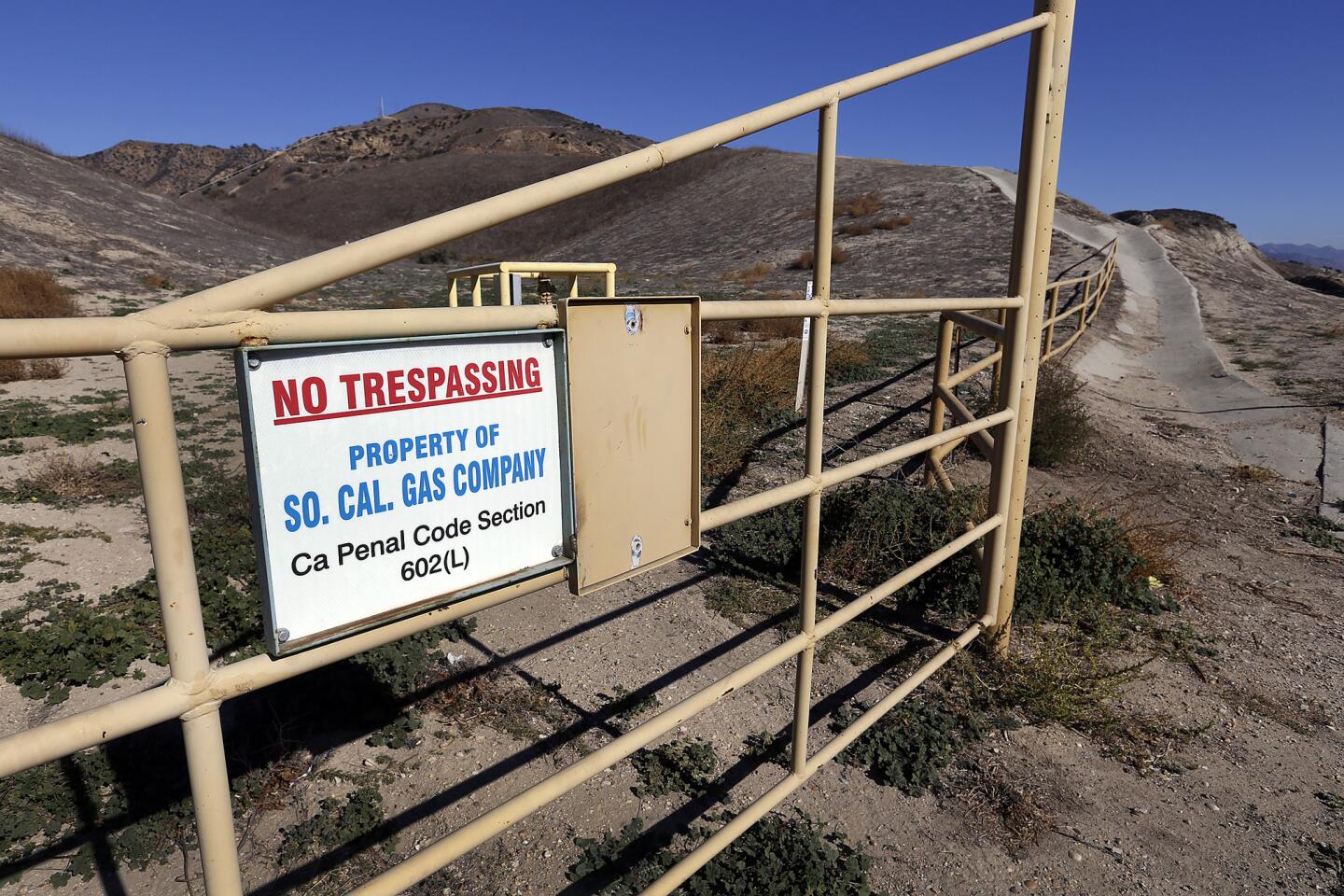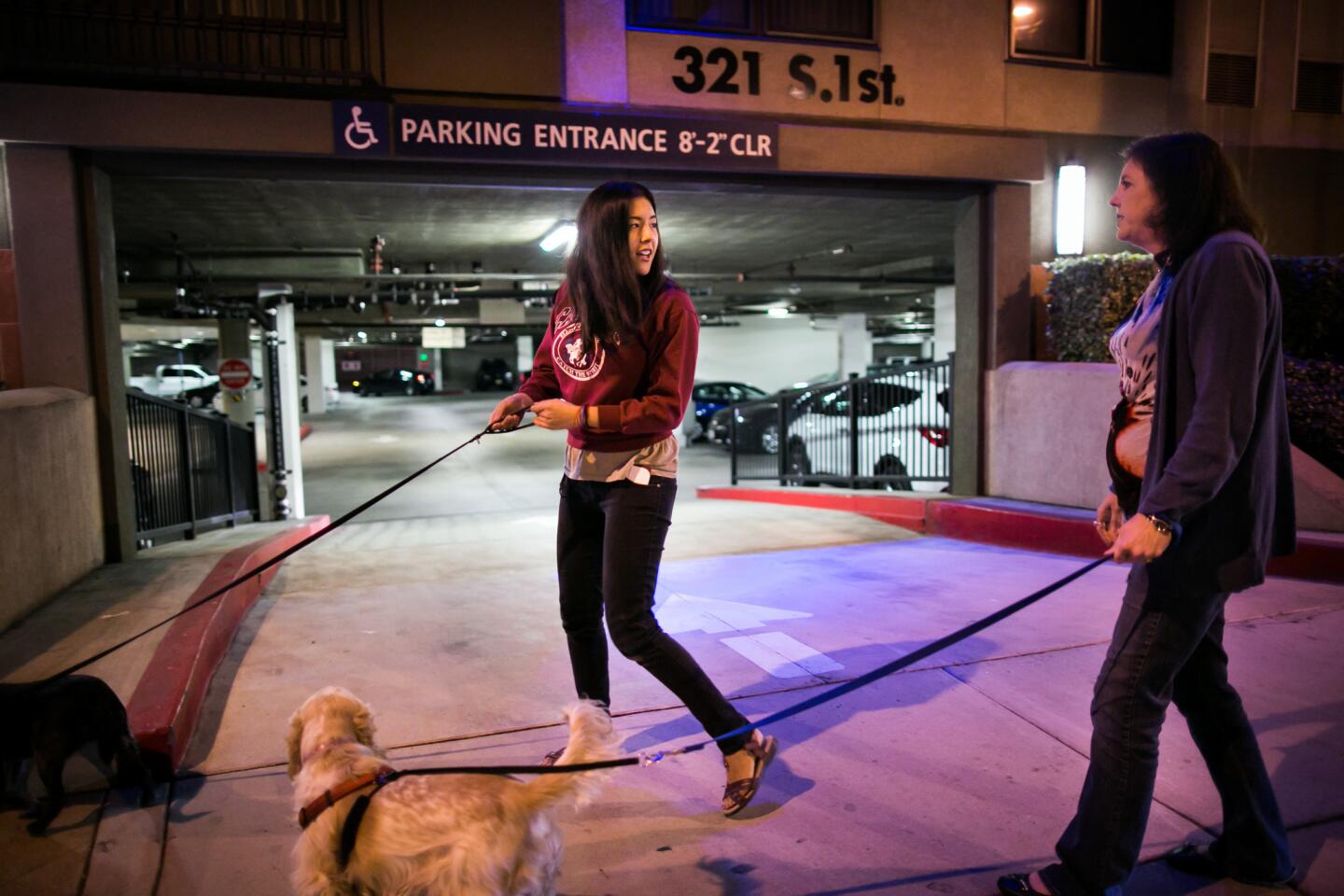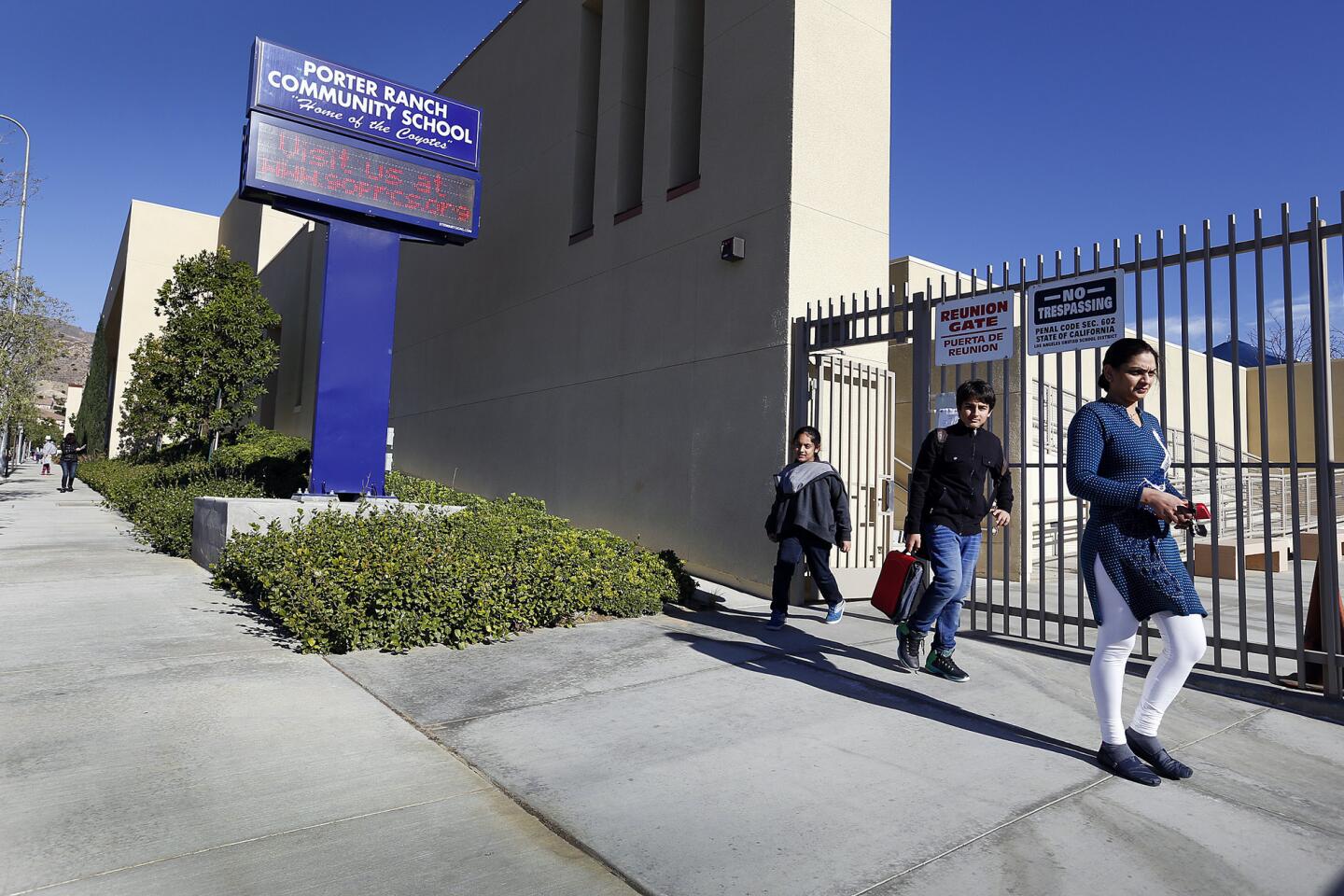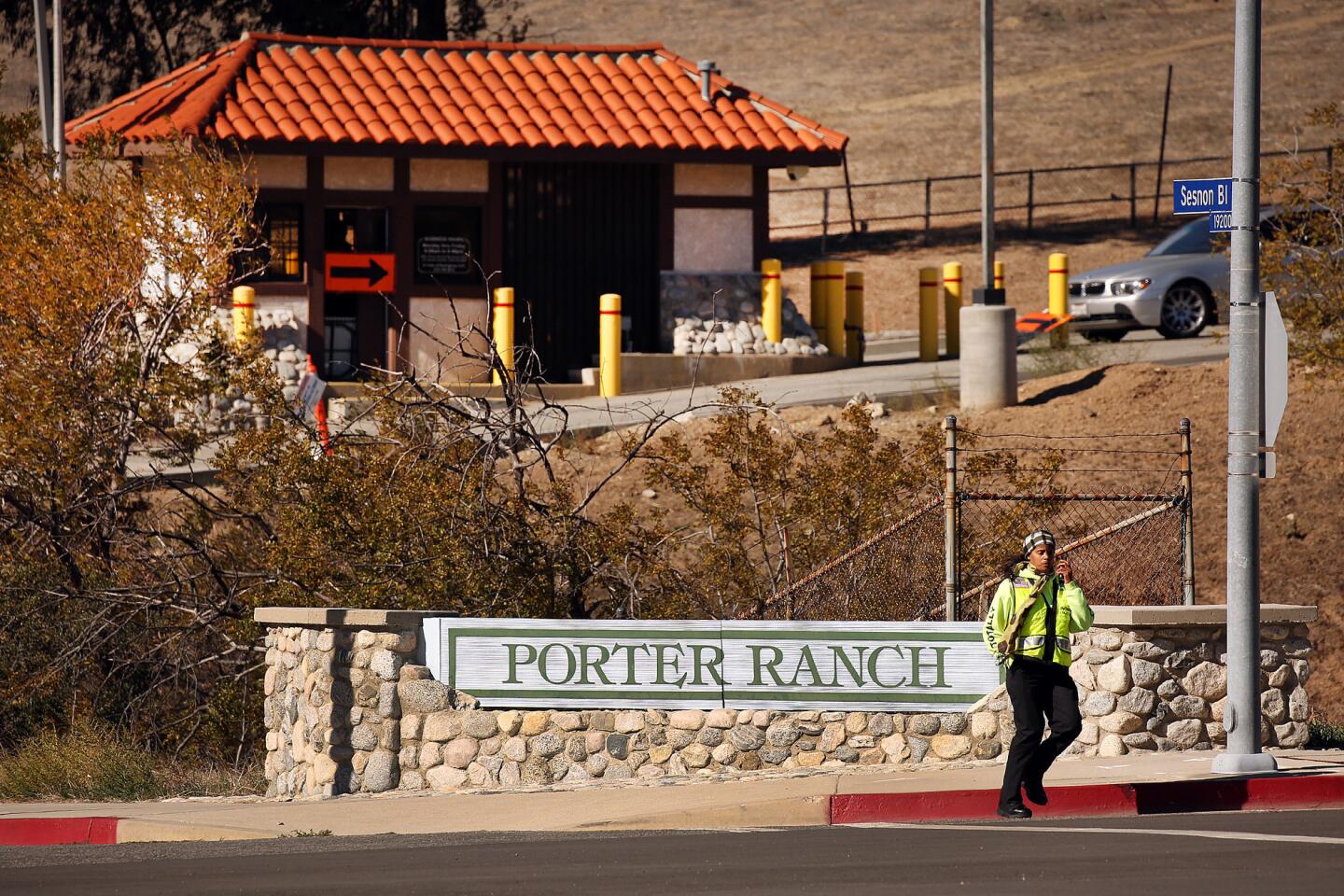Utility wants to resume pumping natural gas into Aliso Canyon facility that was site of massive leak
- Share via
Barely a year after the largest methane leak in U.S. history, and with two-thirds of its wells still shut down, operators of the Aliso Canyon storage field want to pump gas again.
Southern California Gas Co. on Tuesday asked California regulators for permission to resume pumping pressurized natural gas into the ground northeast of Los Angeles, at a depleted oil field now used for storage. Records show the utility has been negotiating this step with regulators for several weeks.
The company cited “extensive physical upgrades” and “advanced technologies” in contending it would be safe to resume operations. Local political leaders immediately disagreed.
“Since the multiple investigations into the cause of the leak have not been completed, we must proceed with extreme caution. Aliso Canyon is not ready to resume normal operations,” U.S. Rep. Brad Sherman (D-Sherman Oaks) said in a statement urging that the gas company be restricted to minimal operations required to prevent power interruptions. The storage field is a primary supplier to gas-powered electric plants.
Los Angeles County Supervisor Michael D. Antonovich introduced a motion, to be taken up by the board next week, asking state utility regulators to continue to prohibit gas injection at Aliso Canyon pending a review of whether the field can be permanently closed. Legislation passed in May requires such a review before mid-2017.
The Aliso Canyon leak began in October 2015 when high-pressure gas escaped from a well deep below ground and found its way to the surface. The blowout took five months to plug, forcing thousands of residents in nearby communities such as Porter Ranch to evacuate their homes. A report on what caused the failure has yet to be completed.
In the aftermath, California regulators required Southern California Gas to test the remaining 114 active wells before returning the storage field to use. The state adopted rules (which in May became state law) that allow the field to reopen with only some wells operable.
Only 29 wells have passed all the inspections required to return to use.
State reports show 80 wells, many dating to the 1950s, have been plugged and taken out of operation. The gas company has a year to either repair and fully test those wells or abandon them.
Preliminary test results showed a number of wells in the field -- originally drilled to produce oil and later converted for gas storage -- had underground leaks. Field operators are not required to report how much gas is lost in below-ground leaks.
State environmental regulators said it could take weeks to decide on the gas company’s request. State inspections at the field are still pending and state utility regulators must concur with reopening the field.
“Safety is our top priority. We will thoroughly review all the information and data, conduct independent site inspections, seek public feedback and the opinion of outside experts before making any determination,” state Oil and Gas Supervisor Ken Harris said in a statement.
Originally, the gas company said its inability to use Aliso Canyon would interrupt power supplies during the summer. “However, warnings of rolling blackouts and energy shortages during the summer never came to fruition,” Antonovich said in his motion.
A federal task force formed in the wake of the Aliso Canyon leak last month called for safety precautions that include the use of outer casings to contain possible leaks. Southern California Gas had a practice of boosting well production at Aliso Canyon and other fields by pumping gas through both the interior pipe and external casing.
The U.S. Department of Transportation also is reviewing national standards governing some 400 underground gas storage facilities in the United States. That ruling is expected this year.
The gas company, a division of Sempra Energy, is defending itself against some 180 lawsuits over the leak. It has estimated costs of lost gas, plugging the leak and housing for about 8,000 area residents at about $717 million.
ALSO
L.A. County wants health impact study of Porter Ranch gas leak and Exide battery plant pollution
UPDATES:
UPDATES:
8:10 p.m.: This article was updated with additional details from the Southern California Gas Co. and comments from elected officials and state regulators.
This article was originally published at 4:15 p.m.
More to Read
Sign up for Essential California
The most important California stories and recommendations in your inbox every morning.
You may occasionally receive promotional content from the Los Angeles Times.
